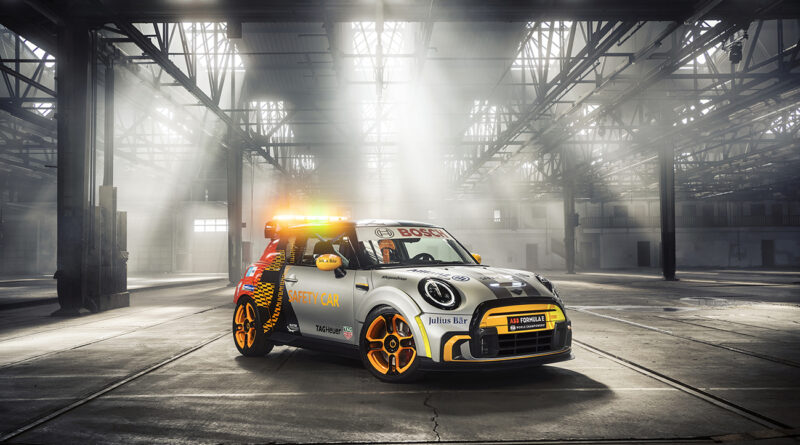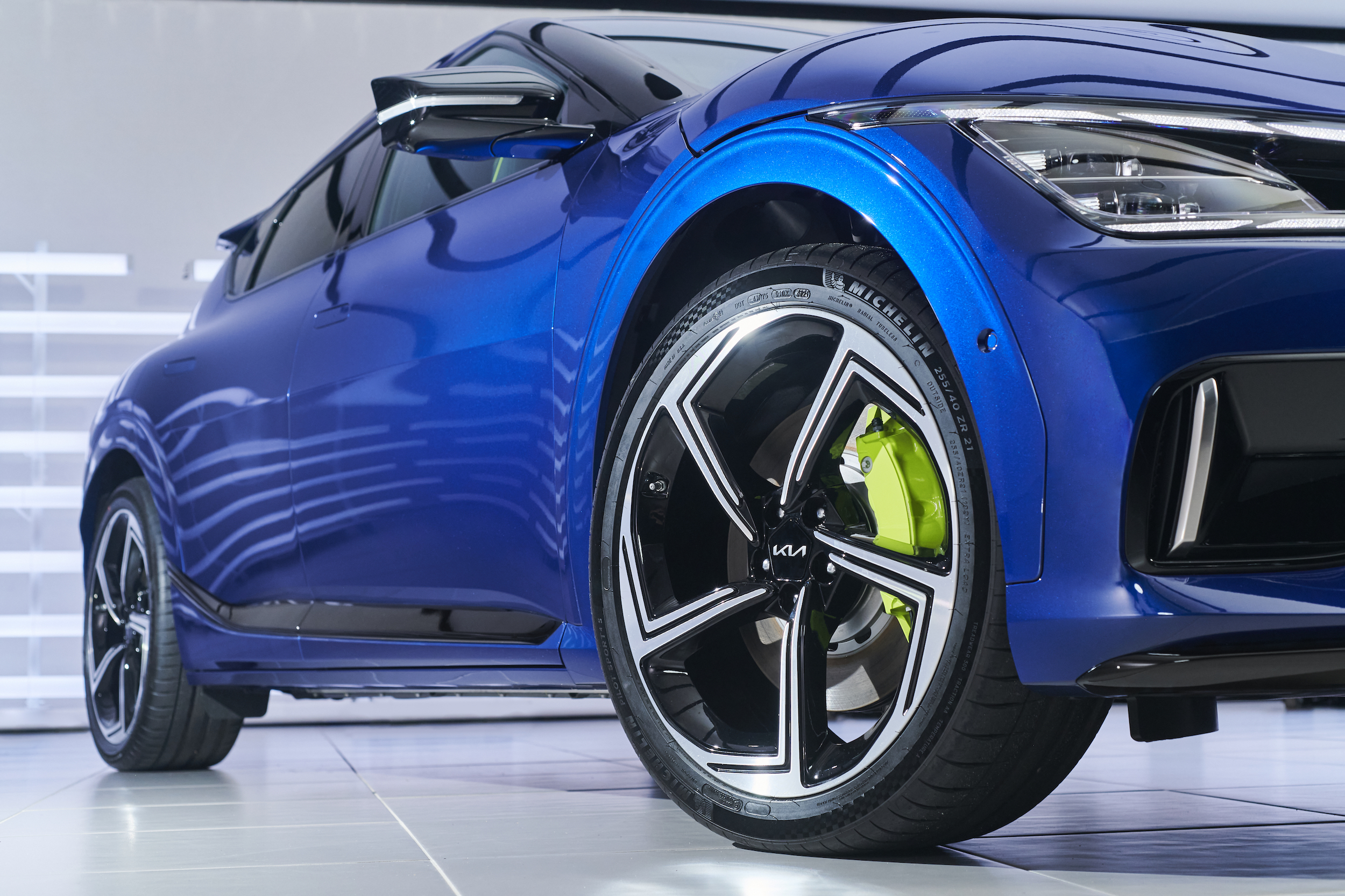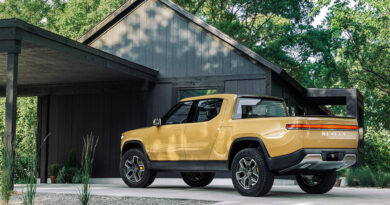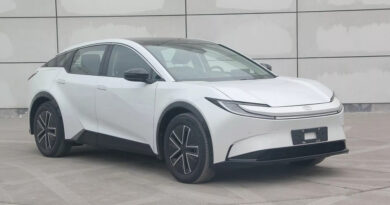Enhanced performance, less weight for Mini Electric Hatch Formula E safety car
While 2021 Formula One Safety Car duties are shared by an Aston Martin Vantage and AMG GT R, Formula E has more sensibly opted for a more extreme version of the Mini Electric.
While F1’s pairing spit out all those nasty fumes courtesy of their 4.0-litre twin-turbo V8s, the Mini Electric Pacesetter performs its duties with zero emissions. Said duties won’t be performed quite as rapidly as the aforementioned Aston and Benz, but the Mini has been purpose-built for track life by shedding 130kg from a standard Mini Electric SE.
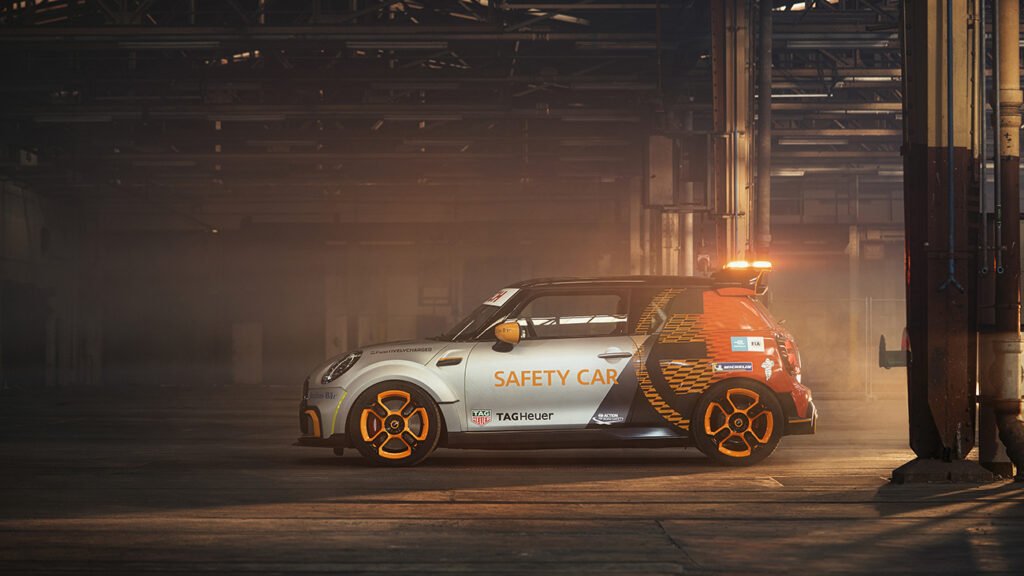
The Pacesetter’s electric motor offers 135kW and 280Nm (up from the normal Mini Electric’s 270Nm), but the 0-100km/h sprint is a relatively tame 6.7-seconds. Not ideal when your typical Formula E racer does the same sprint in 2.8-seconds. Quite correctly, Mini emphasises mid-range figures are more important to a safety car, and the Pacesetter manages the 80-120km/h sprint in a far-from-shabby 4.3-seconds.
As we know, any go-faster Mini has to, by law (probably), have an association with John Cooper Works or JCW. It’s no different here as the car’s official name is “Mini Electric Pacesetter inspired by JCW”. Formula E commentators will have fun with that one each race weekend.
Mini worked with BMW Motorsport to develop new wheel arches for the car’s extended track width, and deeper front and rear aprons with additional front splitters, plus a roof-mounted rear wing featuring orange flashing lights.
There are new side skirts, standout increased-diameter 18-inch black neon/orange wheels to stuff the wheel arches, and 3D-printed spats and spoilers made from recycled carbon fibre.
White flashing lights, a requirement on safety cars, have been integrated into the bonnet.
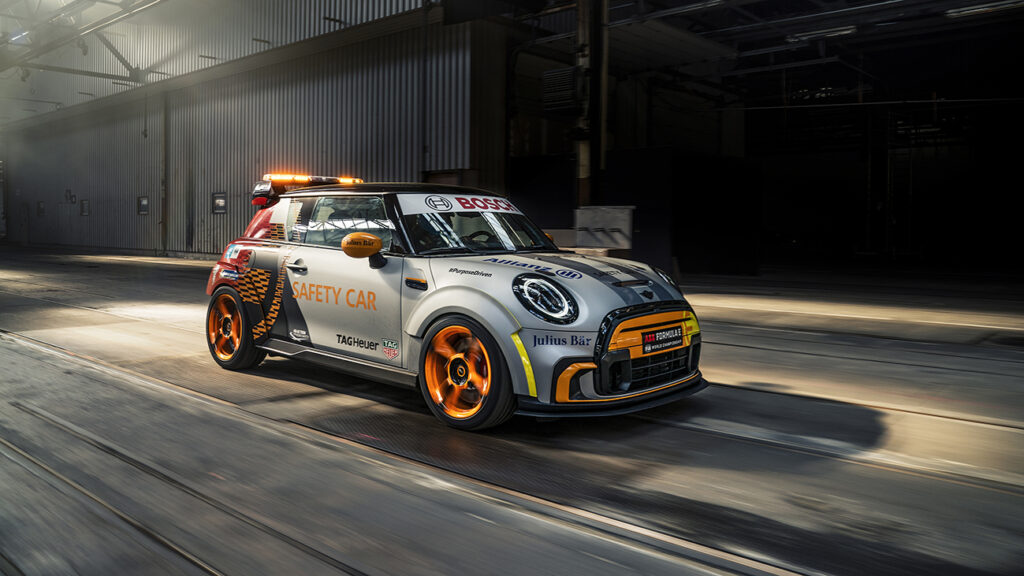
The matte silver body with a high gloss wrap – blending from Highspeed Orange to Curbside Red metallic – are nods to “the respective colour worlds of the Mini Electric and John Cooper Works brand”. The orange blanked-off radiator grille and Formula E sponsor’s logos also add a dash more raciness to the look.
Most of the weight saving is seen through the stripped interior featuring a welded-in roll cage. Only front racing bucket seats with six-point harnesses remain, while the central information display makes way for a carbon fibre cover. More weight’s saved with carbon fibre door panels, cabin trim parts and cloth straps to open the windows and doors.
Total weight is dropped to 1230kg: excellent for an electric car with a range of around 200km, but to put things in perspective, that’s about twice the weight of a 1960s Monte Carlo Rally-winning Mini.
Meanwhile, three-way adjustable coiler suspension, four-piston brake calipers and 245/40 Michelin Pilot Sport tyres add to the track-specific handling package.
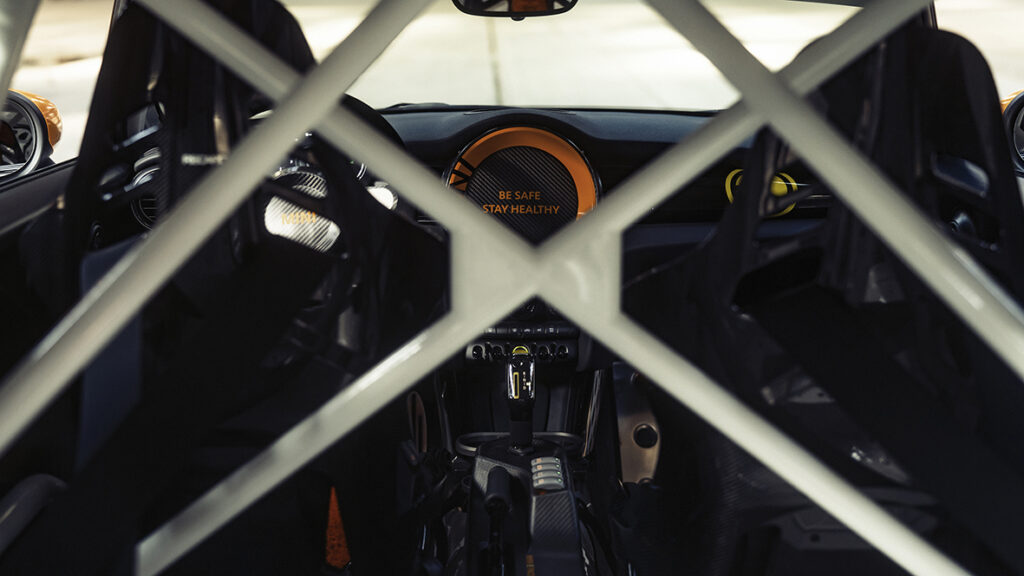
Mini boss Bernd Körber said: “We have already shown how well driving fun and electric mobility go together with the Mini Electric. The Mini Electric Pacesetter inspired by JCW goes at many steps further and blends the performance character of the John Cooper Works brand with electric mobility.”
Away from this paint-by-numbers statement, Körber said something far more interesting when emphasising the Pacesetter was not intended for use on public roads. “It does reveal one of the directions we could take with the electrification of the JCW brand. For me, the message is clear: electrification and John Cooper Works are a good fit.”
A one-make Mini Electric race series, anyone?
The Mini Electric Pacesetter will make its debut in Rome on April 10 at the second event (Race 3) of the 2021 Formula E season. It will be piloted by official FIA Formula E Safety Car driver Bruno Correia.

